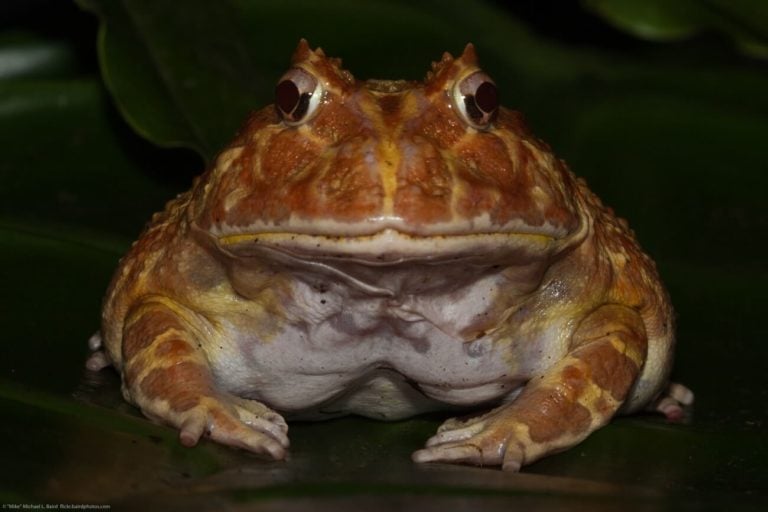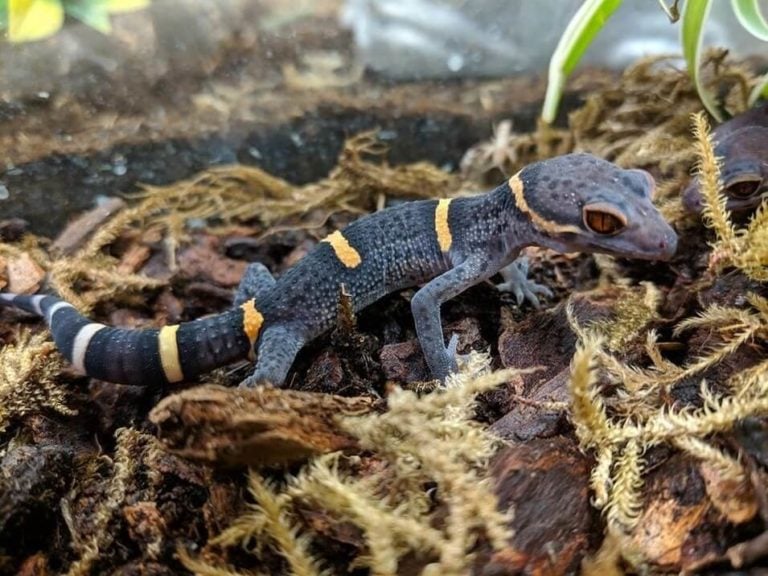Green basilisks are a stunning and sought-after pet reptile. Their reputation for running on water, beautiful color, and high level of activity are all reasons for their popularity.
But if you’re considering getting one, there are some things you’ll need to consider first. While these lizards aren’t challenging to care for in the traditional sense, they are different.
This guide will cover the essentials of green basilisk care to prepare you for what it takes to own one as a pet.
Table of Contents
Species Summary
The green basilisk (Basiliscus plumifrons) is a reptile that is also sometimes referred to as the Jesus lizard. This nickname comes from its ability to run across the surface of water for short periods of time, but you’ll sometimes hear them called green crested basilisks as well.
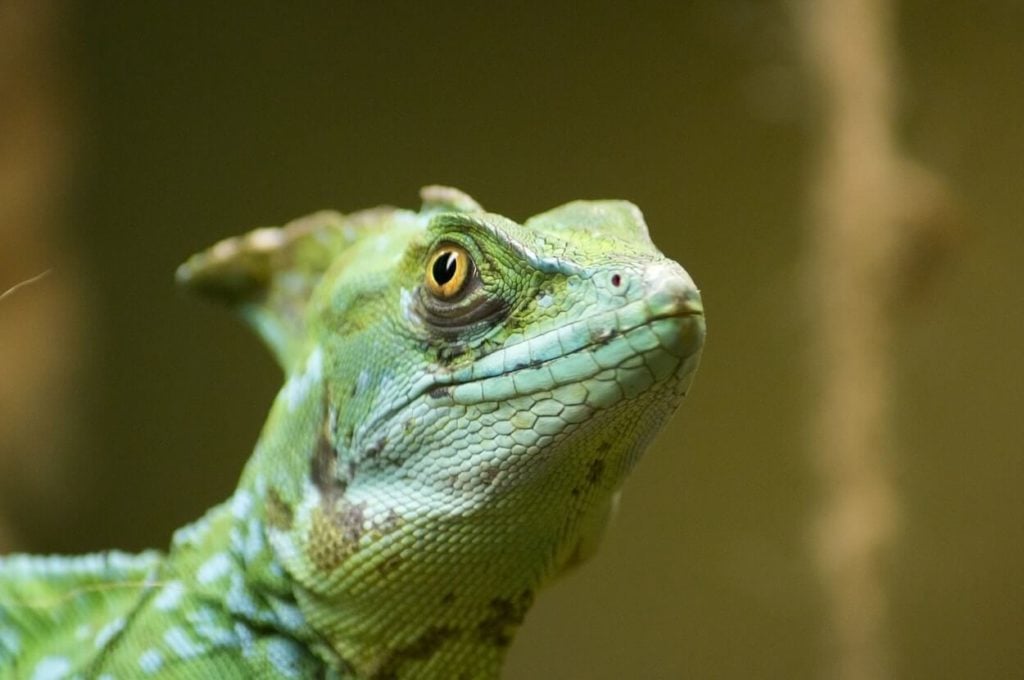
This long, thin lizard is native to the verdant, humid lowland areas of Costa Rica, Honduras, Nicaragua, and Panama. It can be found in other areas of Central America as well.
The green basilisk is highly prized by reptile enthusiasts for its beautiful coloring, but a shy and sometimes flighty temperament can make this basilisk difficult to handle.
However, placed in a safe and comfortable environment, the green basilisk can be a pet that sparks conversation and admiration for many years.
Appearance And Colors
For a pet lizard with striking visual appeal, you can’t go wrong with a green basilisk. This absolutely gorgeous lizard boasts an electric green body that can feature light-blue, white or gray markings as well as darker stripes. The belly of this basilisk is often a lighter green than the rest of the body and creates an eye catching contrast.
The true distinguishing feature of the green basilisk has to be its majestic dorsal crest. This is a characteristic feature of all male basilisks. This crest runs from the head all the way down to the tail. At first glance, this crest may seem to be one continuous piece, but it is actually a series of four vertebral crests.
If you look carefully, you can see a tiny crest just behind the eyes. As you move down the back of the lizard, you will notice a larger crest behind the head, a prominent dorsal crest and a smaller tail crest. These crests are used to impress the ladies when the male is ready to mate.
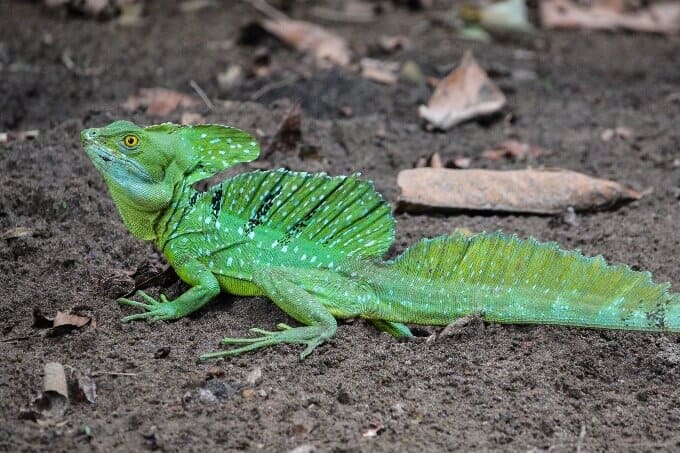
Expert Tip: Females and young green basilisks have a much smaller second head crest and a tiny tail crest.
Average Green Basilisk Size
The average size of a fully grown green basilisk is usually around 24-36 inches in length. A female, always slightly smaller than a male, can grow to be around 18-24″. Most of the length actually comes from the tail.
It’s important to really understand the potential size of this reptile at full maturity. This helps a lot when you are trying to create a healthy and safe living space for your lizard. If it helps to use a tape measure to visualize this, give it a shot!
Lifespan
The typical green basilisk lifespan is between eight and ten years. If you’re looking for a beautiful lizard that will give you years of enjoyment, then this species is an excellent option!
Of course, to help your green basilisk reach their full potential lifespan, a strict adherence to diet, enclosure cleanliness and heat requirements is an absolute must. We cover all of this in-depth later on in the guide.
Green Basilisk Care
Green basilisk care is not too difficult, as long as you’re committed to maintaining a consistent and safe habitat setup. These reptiles can quickly become unhappy and frightened if its care routine is not well thought out.
Even though some consider it to be the easiest basilisk to care for, keeping it happy and in good health can still be quite a challenge if you’re not adequately prepared..
Providing the food, shelter and an environment that most closely mimics what it would find in the wild, is the best way to promote contentment and confidence. Keeping the living environment scrupulously clean is another important facet of good green basilisk care.
Enclosure Size And Dimensions
Having the correct size of enclosure is very important for the health and happiness of your green basilisk. Since the green basilisk loves to climb and bask, you will probably need a larger enclosure than you may think.
Hatchlings can be kept in a long, 20 gallon fish tank until they get older. It’s best not to give your hatchlings too much space.
Older basilisks should be put in an environment that is no smaller than 48″x24″x36″. If you intend to add lots of branches for climbing, you may want to make the vivarium even larger. You’ll also need a larger space if there are two or more lizards in the same vivarium.
Expert Tip: One of the most common enclosure choices for your green basilisk is what’s called a vivarium. This type of enclosure has wooden sides and a glass front. If you notice that your basilisk seems stressed out by the glass, covering the area with aquarium cling film is an excellent solution.
Recommended Habitat Setup
When deciding how to construct your green basilisk habitat setup, the trick is to make the environment feel as close as possible to their natural habitat.
These reptiles will appreciate both things to climb and places to bask. They also need areas for hiding and relaxing.
This means plenty of branches, rocks, plants and other natural additions will go a long way to making your pet feel happy and safe.
As far as substrates go, anything that retains moisture is a good choice. You don’t want the environment to be too wet, just nice and humid. We recommend using orchid bark or cypress mulch. Just make sure that it’s pesticide free!
Lastly, make sure that you provide a fresh water source (more on that later).
Temperature And Lighting
Because green basilisks are cold-blooded (like all reptiles) and are not able to regulate their body temperatures in captivity without a little help from you. This means you’ll need to provide a temperature gradient within your vivarium. This gives your basilisk a warm place to bask and a cooler place to bring down their body temperature.
Your green basilisk is going to be happiest at a daytime temperature that ranges between 82°F and 87° and a nighttime temperature of no lower than 73°F.
On the other side, their basking area should stay at 95 degrees Fahrenheit.
There are lots of different kinds of heaters you can use including ceramic heaters, tube heaters, heat mats and reflector bulbs. As long as you purchase from a reliable and trusted company, you have plenty of options.
Expert Tip: These reptiles need both UV and UVB rays, so you’ll need to provide both. We recommend leaving your UV light on for 10-14 hours each day.
Humidity
Green basilisks love an environment that’s nice and humid. They do best with humidity levels between 55 and 75 percent (higher humidity during warm seasons, and lower humidity during cool ones).
Fortunately, providing the correct amount of humidity is not difficult and does not require expensive equipment. Believe it or not, simply misting the vivarium once a day usually does the trick! You don’t want the area to be wet, just damp.
However, some owners add a waterfall feature to their vivarium environment. This not only provides interest and beauty to the set up, but it also provides a natural source of humidity.
Water
Providing fresh, clean water is a very critical part of your green basilisk care regimen. You’ll need to go with a water bowl that’s large enough for drinking as well as for bathing. In the wild, basilisks live near water sources, and having plenty of water near them gives them a sense of security.
Expert Tip: Make sure you’re keeping an eye on the cleanliness of the water throughout the day. If it starts to look a little dirty, changing it will keep your pet comfortable and reduce the risk of disease.
Food And Diet
Feeding your green basilisk is not always a straightforward affair. Wild-caught lizards can be very shy and will often have a hard time adjusting to their surroundings and feeding routine. Some will come around after a few weeks, but some of them will never adjust properly.
Even with captivity-bred basilisks, proper feeding requires a considerable amount of knowledge and patience.
One thing you need to know is that female basilisks are very aggressive feeders. If a male and a female are in the vivarium together, you will need to keep an eye on them while they’re eating. A female will quite often snatch food away from a male, or she’ll simply grab the food before the male can get to it.
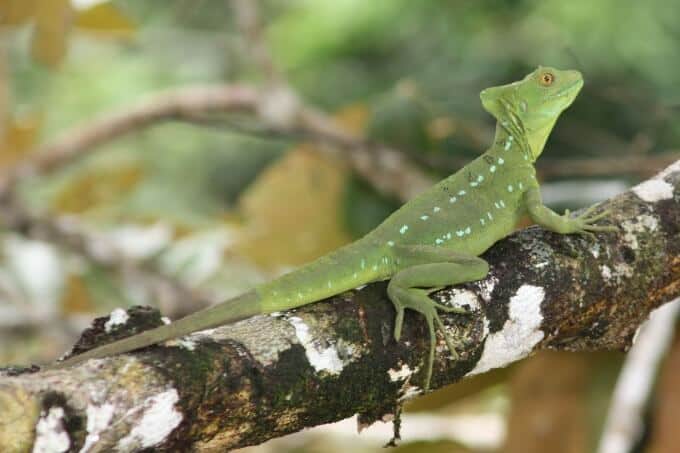
The other tricky part of the feeding process is knowing what to feed them. Green basilisks are omnivorous, and they eat both plants and meat in the wild. In captivity, basilisks seem to appreciate meat more, so a diet of insects and the occasional rodent will make your basilisk very happy.
If you purchased a baby, or if you have new hatchlings, then you will want to give them small crickets, roaches or tiny super worms dusted in calcium and vitamins. This can be done every day. Never give your young basilisk fruit. This can lead to runny stools.
As your basilisk grows, you will be able to introduce larger superworms, mealworms or Goliath worms. Adult green basilisks also really love fruit such as mangoes, cantaloupes, raspberries and blueberries. Adding the occasional sweet potato or carrot can help add Vitamin A to their diet.
Make sure that this food is never larger than the lizard’s head, and only feed as much as the lizard can eat at one time.
Potential Health Issues
Part of being a responsible reptile owner is being prepared for some of the health concerns that can crop up. The green basilisk, like all pets, is susceptible to a variety of health issues.
Before we discuss some of these health issues, there are a few key things to look for that can be indicative of a health issue. Some of these indicators include: a change in weight, a change in behavior, lethargy, loss of appetite and even a change in their feces.
If you notice any of these signs, it’s important to get your lizard to a vet right away. Issues that may seem minor, can become serious quite quickly.
Let’s take a quick look at just a few of the health issues you may encounter.
Issue 1: Parasites are a real concern with these lizards. Some of the parasites that seem to plague green basilisks include nasties like nematodes, coccidia and flagellates.
Issue 2: Vitamin A deficiency is another green basilisk health issue that can be easily prevented. In the wild, these reptiles eat a variety of leaves that provide all of the Vitamin A they need. In your vivarium environment, it may be harder for them to get all of the carotenes they require.
Vitamin A is very important for the eye health of your green basilisk. If the environment inside the vivarium becomes too dry, Vitamin A can help fight off any eye infections caused by environmental dryness. Vitamin A will also help your green basilisk fight off parasites.
Issue 3: Metabolic bone disease is another typical green basilisk health issue, and it’s caused by a lack of Vitamin D3. Using a supplement powder is the best way to combat this issue.
Issue 4: Lastly, many of these lizards suffer from rostral injuries. This is likely when they begin to exhibit an odd behavior known as nose banging. A stressed lizard will often run at the sides of the enclosure and bang its nose. This can cause the wound to become infected, and eye injuries as well as brain damage have been known to occur. Limiting the glass in your enclosure can help prevent this.
Behavior And Temperament
Green basilisks are beautiful and interesting pets to own. That being said, they are not exactly known for their easy and friendly demeanor.
However, they are active climbers and baskers. This behavior can provide hours of lively and interesting entertainment (which is one of the main reasons why they’re so popular)
One thing to know up front is that your green basilisk will be skittish in nature and is easily agitated and frightened.
This tendency to kind of “freak out” can lead to a destructive behavior known as nose banging or nose rubbing.
Green basilisks and other lizards have a tendency to rub their noses along the glass portions of their enclosure. It is thought that this happens when they feel threatened or exposed. In the most extreme cases, they will actually run at the glass, head first, and this can cause a wide range of serious medical issues.
Expert Tip: The best thing you can do to avoid this is provide your pet with the happiest, healthiest, and most natural habitat possible. Give it love, care and plenty of places to hide, bask and climb.
Handling
Engaging in proper handling with your green basilisk will go a long way towards ensuring that the relationship with your pet lizard is healthy, safe and satisfying.
One very important thing to know is that most green basilisks do not like to be handled at all. If you are looking for a calm, friendly and easily handled lizard, the green basilisk is not it.
These lizards are very easily upset, and they can become aggressive or scared if they feel threatened. This fear often causes them to panic and even bite!
If you are determined to handle your green basilisk, time and patience are key (but we still don’t recommend it). Give your friend time to get used to your scent and the sound of your voice. Feeding it using a pair of tongs can sometimes build a sense of trust.
Chances are that your lizard is never really going to be a pet that you can pick up and hold with ease. Instead, simply appreciate the beauty and uniqueness of your new friend!
Wrapping Up
As you can see, green basilisk care is more about understanding the temperament of these lizards than anything else.
If you’re familiar with their behavior and don’t try to make them something they’re not (especially when it comes to handling), then you and your pet will get along just fine!
We know this care sheet couldn’t cover everything, so feel free to send us any questions you might have. We love talking about these lizards!

